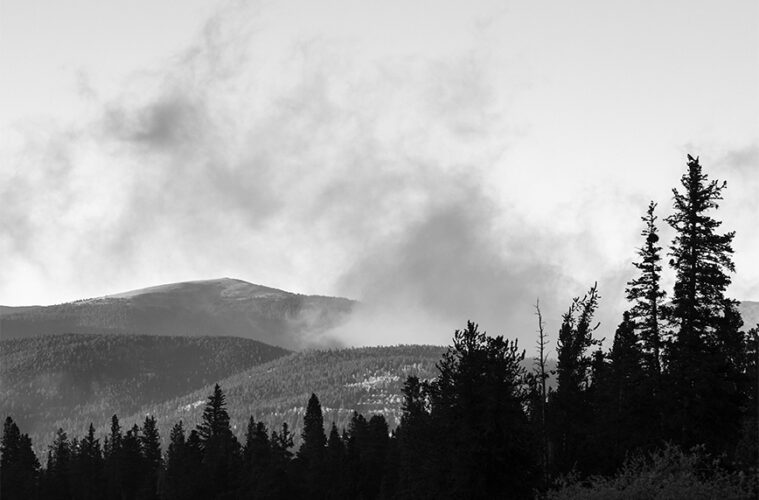BY SAM DESTEFANO
It was a black and white photograph of a cloud creeping up above the tree-line that stopped me in my tracks when I first stumbled upon JC Buck’s photography. I have always been drawn to anyone who can perfect the art of finding beauty in the often overlooked moments. This being said, I was extremely grateful to have an opportunity to dig deeper into JC Buck’s craft.
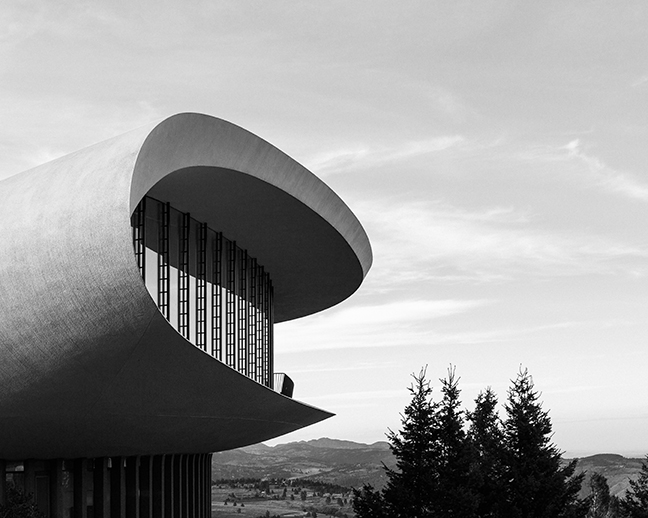 JC, take us to the beginning. When did you first pick up a camera and realize this was your life calling and were you using film or digital?
JC, take us to the beginning. When did you first pick up a camera and realize this was your life calling and were you using film or digital?
This is a long story, so I will try and keep it short! I first picked up a 35mm SLR film camera as a freshman in High School in the early 1990’s. I took a dark room film class and instantly fell in love with film photography. My first exposure was of a Porsche 911, my all-time favorite sports car, and the print hangs in my Dad’s office to this day. While I had some dreams of working as a photographer, I ended up going a different direction. It would be years later when I found myself very discontent working in the corporate world that I had the courage to disrupt everything and go for it. My partner, Liz Richards, a successful entrepreneur inspired me to combine my passions for photography and architecture and I launched my business. That was seven years ago. I have built my photography practice focusing on architecture and interior design. This year, right before the pandemic, I launched my fine art gallery of large format monochromatic work. Our opening was a tremendous success, then the lock down was ordered. I initially panicked. But, to my surprise, the “home” has taken on a new meaning during this year and people are investing in art. The timing to launch an art gallery turned out to be perfect! I feel extremely fortunate. I now balance my time between my commercial architectural/interior commissions and my fine art gallery work. It took me a while to find my calling, but I feel blessed to have found a craft and profession that I want to do the rest of my life.
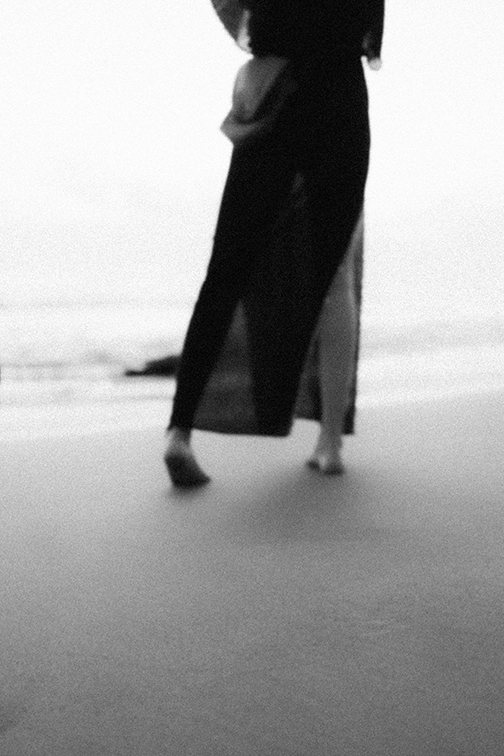 How and why, specifically, was living in Brussels at an early age important to the development of your vision, style and aesthetic?
How and why, specifically, was living in Brussels at an early age important to the development of your vision, style and aesthetic?
Living in Europe at such an early age molded the foundation of who I am today. I did not realize this until much later as an adult, but growing up in a different country and being exposed to multiple cultures, nationalities, cities, languages, landscapes led to my sensitivity and curiosity to my surroundings. I am a very visual and observant person. I often joke that I could pick someone out at a stadium full of people if I had too! Living in Europe gave me a thirst for learning, travel, and adventure. As a family we would travel, by car or train, every weekend to a new country, town, or city. At such an impressionable age, I was exposed to a lot. Fast forward to today and travel and adventure is what I live for. Prior to the pandemic I was on the road two weeks of every month. I just love that kind of lifestyle where my senses are at high alert as I consume an unfamiliar environment.
Your work is driven so much by seeing things in a certain way. You describe it as distinguishing the world around you “in lines and algorithmic shapes” and as the idea of “capturing a visual language that is both aesthetically beautiful and meaningful.” Can you walk us through this moment of discovery? Are you constantly envisioning and interpreting the world as a potential piece of art?
I have learned that I have a very rectilinear and geometric eye in how I see the world and compose my photographs. This has never been intentional, but more how I naturally see. For years I did not think I had much of a photographic style or aesthetic, until geometric shapes and lines started to emerge in my photography as a common theme. My work is both documentary and abstract. I see the world and I capture as is, but I focus in and edit down to simply a horizon line or air bubbles in the ice of a frozen lake for example. The photographs become very minimal in both composition and idea for me, but open to interpretation by the viewer. Aesthetically, I find the minimalism very visually pleasing as well. I am more interested in the parts versus the whole when it comes to my subjects and how I craft the visual language of my work.
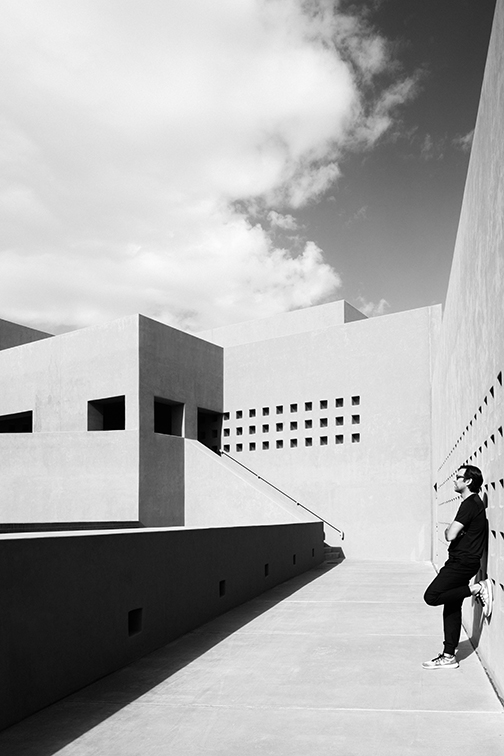 Your photos come off as being perfectly executed in every single detail. Is achieving this a daunting task? Can you explain your artistic process?
Your photos come off as being perfectly executed in every single detail. Is achieving this a daunting task? Can you explain your artistic process?
Thank you! Huge compliment! I am not much of a technical photographer, nor is there any sort of pre-production that goes into creating my photographs. I work off feeling, how a place makes me feel when I am there. It is a very spontaneous approach to working and simply requires me to be out with my camera, often walking aimlessly until something grabs my attention. I occasionally will have an idea or theme in mind while out photographing, but usually it is more random. I use the practice of photography to manage my mental health. I struggle from an anxiety disorder that can be at times paralyzing and exceedingly difficult to live with. Photography becomes a form of therapy for me. It is a way to be in the present, almost meditative. Using photography as a tool to manage my mental health leads to the work I create. My work is the outcome of my self-initiated therapy. So, it is very personal and meaningful to me. You used the word “daunting” and for the way I work it is never daunting or difficult. My commercial work, on the other hand, can be very daunting and stressful, because in that space I am not creating for myself. I place a lot of pressure on myself to deliver for my clients. With my own work, I live by the idea of creating for an “audience of one.” I learned early on that is all that matters.
A good portion of your work is concerned with the environment and the natural world. In the snap of a frame, you instantaneously capture a moment and what, to me, seems like poetry. How would you describe this poetry and the relationship between your work and nature?
The theme that continues to come up when I talk about my work is how it is my way of living, managing my mental health and staying present. It all starts there. With going out in nature or a city, the environment becomes my subject. The process of photographing for me is the art itself. I am a true introvert and it is the creative process, being alone working, where I gain my energy. While I enjoy the company of others and can turn it on in social situations, its being in nature, in solitude, where I find my peace, my calm and can be my true self. Nature is very healing and for many years, especially in my adult life, I seemed to have forgotten that. Now that I am focused more on my fine art work I am spending increased time within nature, the benefits are immediately realized. Nature is indeed poetic and my goal is always to capture nature in a moving and symbolic way. I am less interested in showing you the landscape itself through technical proficiency of the camera, but more how it made me feel when I was there in the moment.
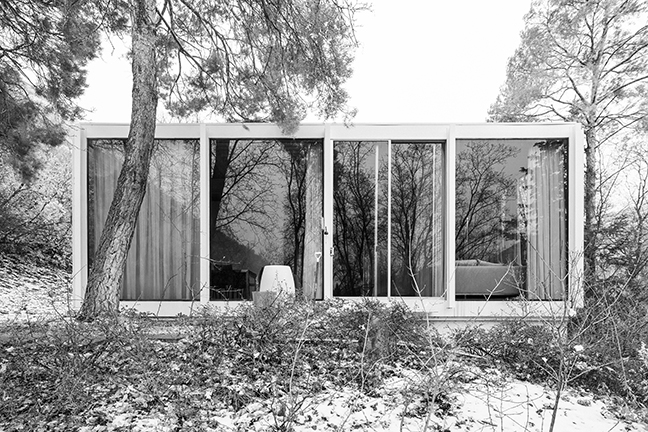 On the other side of the coin, a large part of your work is dedicated to architecture and what you call the “structures we live in.” From your perspective, what is the significance of this study?
On the other side of the coin, a large part of your work is dedicated to architecture and what you call the “structures we live in.” From your perspective, what is the significance of this study?
If I look back to childhood, I wanted to grow up to be an architect. So, it is funny how things come full circle with my photography career being born out of photographing architecture. We spend our whole lives in and around architecture. Just like the natural environment, it is everything. I am drawn to studying architecture around the world, from the assorted styles, to how we use these spaces. And as I was saying earlier, architecture and its shapes and lines lends well to how I see the world, in geometric forms. I find the built environment fascinating and the more I learn about architecture, the more I want to dig even deeper. For me, architectural photography is no different than landscape or nature photography, I do not differentiate them. It is all a practice of capturing our environment in the time we here on this earth and I find that to be remarkably interesting and worthy of study.
You’ve mentioned that you have embraced the idea of minimalism. This is apparent in your profound black and white photos. Does this translate past your artwork and bleed into the way you live?
I have become very much a minimalist. Over the past several years I have edited down my life, how I spend my time, who I spend my time with, how I consume, what I own, and so on. I have found by reducing my choices, I am able to significantly reduce my overall anxiety. I photograph in black and white to take another step into the abstract. A photograph is already abstract going from 3D to 2D, and with removing color you take another step away from reality. It is the process of subtraction that I aim for in my idea of living a minimalistic life. I am striving to narrow my focus and attention on what truly matters to me. I was not always this way, when I was younger, I very much had a “more is better” mentality to consumption, friends, experiences, etc… As I have gotten older, I have become more in tune with my authentic self and what truly motivates and excites me in this life.
You have been very open about living with anxiety and depression. First of all, we respect your willingness to be forthcoming about this battle in an effort to shatter the taboos of mental illness. Can you tell us a bit about this and how your art is interwoven into your healing process?
We heal one another together. We need as a society and culture to be more open about mental health and we are making great progress in that regard. I openly talk about my own battles with mental health now and find it helps me profoundly. I have struggled with anxiety and depression since I was in junior high school, first noticing the darkness of depression and fear of anxiety in the 7th grade. In college I worked with a psychologist during my Junior and Senior year that changed my life. It was not until recently did I start sharing openly how I struggle with anxiety and depression. It is a major part of who I am and my work has become part of my therapy. Through my work I find peace and am present, and the result of my work often reflects that mindfulness. I want to get more involved in mental health and share and promote how the power of creativity and art can help manage and heal the wounds of mental illness.
In our deep dive (borderline stalking) into your work, it is clear that your photography has evolved over the years. We’d love to know where your passion will take you next. What is on the horizon for you and your art?
I am still a young photographer in terms of my work. While I turned 40 this year and my beard is going grey, I am just getting started with my photography journey! I am producing larger format work, which is what I am most excited about now, pieces that contribute to defining a space and set an intentional tone. Through my interior designer clients, I am producing custom artworks for specific spaces. This has been extremely rewarding because we think about how we want the space to feel and its overall aesthetic, it is a great collaboration between art and interior design. I just recently came out with my first photography collector’s limited edition art book featuring photographs from my ICE Collection and I am thrilled with how it has been received. Also, as I mentioned early, I want to do more in the space of mental health and how art and photography can be a powerful tool in therapy and healing.
Thank you so much for sharing with us your story and vision, JC. If you would like to see more from his collection, visit jcbuck.com.

